History of Nepalese cuisine
The history of Nepalese cuisine is a fascinating blend of indigenous practices, geographical influences, and cultural interactions. This rich culinary history can be traced back through several key stages:
-
Ancient Foundations: The earliest form of Nepalese cuisine was heavily influenced by the geography and climate of the region. In the rugged Himalayas, the diet was primarily based on what the harsh environment could support. Staple foods included barley, millet, and buckwheat, as rice was not yet widely cultivated in the cooler climates. These grains were often turned into porridges or simple breads.
-
Agricultural Developments: As agriculture developed, particularly in the more temperate regions, rice became more prominent. Along with rice, lentils and other vegetables became staples, leading to the creation of Dal Bhat (lentil soup served with rice), which is still a cornerstone of Nepali cuisine today.
-
Cultural and Trade Influences: Nepal's location between India and Tibet meant that it was influenced by both cultures. From India, Nepalese cuisine adopted a variety of spices, such as cumin, coriander, and turmeric, which added complexity and flavour to the dishes. Tibetan influence introduced items like momo (dumplings) and thukpa (noodle soup).
-
Newar Community Influence: The Newar community, indigenous to the Kathmandu Valley, has had a significant impact on Nepalese cuisine. They brought techniques of fermenting and pickling, essential for preserving food in times when fresh produce was scarce. Their cuisine is known for its variety and complexity, with dishes like Yomari (rice flour dumplings filled with sweet fillings).
-
Royal Cuisine and Feasts: The Malla and Shah dynasties, which ruled Nepal for centuries, introduced a certain sophistication to Nepalese cuisine. Royal kitchens experimented with various ingredients and cooking methods, leading to a richer, more diverse culinary landscape.
-
Ethnic Diversity: Nepal’s numerous ethnic groups, each with their own unique culinary traditions, have contributed to the country's gastronomic diversity. From the Sherpas of the Himalayas to the Tharus of the Terai lowlands, each community has its own distinct culinary identity.
-
Modern Influences: In recent years, Nepalese cuisine has begun to reflect global influences. Urban areas, in particular, have seen a rise in fusion cuisine, blending traditional Nepalese dishes with international flavours and techniques.
-
Globalisation and Tourism: The growth of tourism in Nepal has introduced international cuisines to the country and taken Nepalese cuisine to the world. This exchange has encouraged innovation and diversity in local food practices.
The history of Nepalese cuisine is a story of adaptation, innovation, and fusion, reflecting the country's diverse cultural heritage and its dynamic interaction with its neighbours and the wider world.
Traditional Nepalese Dishes
Traditional Nepalese dishes reflect the country's diverse geography and cultural heritage, offering a variety of flavours that range from mild to very spicy, often accompanied by rice or lentil dishes. Here are some of the most iconic traditional dishes from Nepal:
Dal Bhat
Dal Bhat is a quintessential dish in Nepalese cuisine, revered not just as a staple diet but as a cultural emblem of Nepal. The phrase "Dal Bhat" literally translates to "lentil rice," signifying its two primary components: Dal (lentil soup) and Bhat (rice). This dish exemplifies the simplicity, nourishment, and comfort inherent in Nepalese cooking.
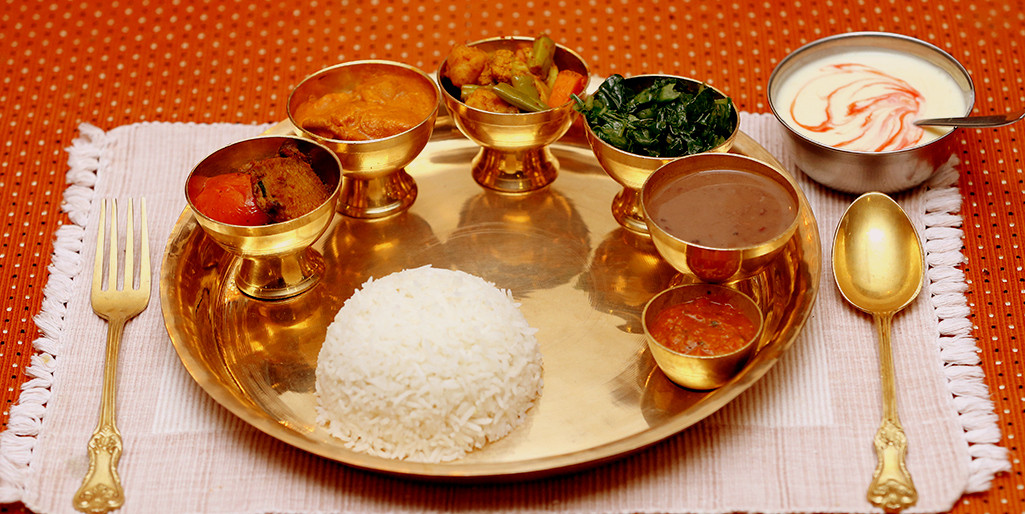
Components of Dal Bhat
-
Dal (Lentil Soup): The dal is typically made from lentils or other pulses, cooked and seasoned with spices like turmeric, cumin, garlic, and ginger. Depending on the region and personal preferences, it can range from a thick stew to a more soup-like consistency.
-
Bhat (Rice): The rice served is usually a simple steamed variety, acting as the perfect base to absorb the flavours of the dal and other accompaniments.
Accompaniments
Dal Bhat is often served with a variety of side dishes, enhancing its flavours and nutritional value.
-
Tarkari (Vegetable Curry): A mix of seasonal vegetables cooked with spices. This can include anything from potatoes and cauliflower to green beans and carrots.
-
Saag (leafy greens): spinach or other green leafy vegetables, often simply sautéed with garlic and cumin.
-
Achar (Pickle): Various types of pickles, either spicy or tangy, made from vegetables or fruits, add a punch to the meal.
-
Meat or Fish (Optional): In some households, dal bhat is accompanied by a portion of meat or fish curry, especially on special occasions.
-
Papad (Crispy Lentil Wafers): Often served as a crunchy side.
-
Cultural Significance: Dal Bhat holds a special place in Nepalese culture. It's not just a meal; it's a ritual, a comfort, and a symbol of hospitality. In many Nepalese homes, dal bhat is eaten twice a day, a testament to its fundamental role in the diet.
-
Nutritional Value: Nutritionally, dal bhat is a well-rounded meal. The lentils provide protein and fibre, the rice is a source of carbohydrates, and the accompanying vegetables contribute vitamins and minerals. This balance makes it not only a staple but also a sustaining meal for people of all ages and occupations, from the cities to the high Himalayas.
Dal Bhat is more than just a dish; it's a reflection of Nepalese culture and way of life. Its simplicity, versatility, and nutritional balance make it an enduring favourite, deeply ingrained in the heart of Nepal's culinary traditions.
Momos
Momos are a beloved culinary staple in Nepal, revered not only for their delicious taste but also as a symbol of cultural exchange and adaptation. These steamed dumplings have their roots in Tibetan cuisine but have been heartily embraced and adapted by the Nepalese people, making them an integral part of Nepal's food culture.
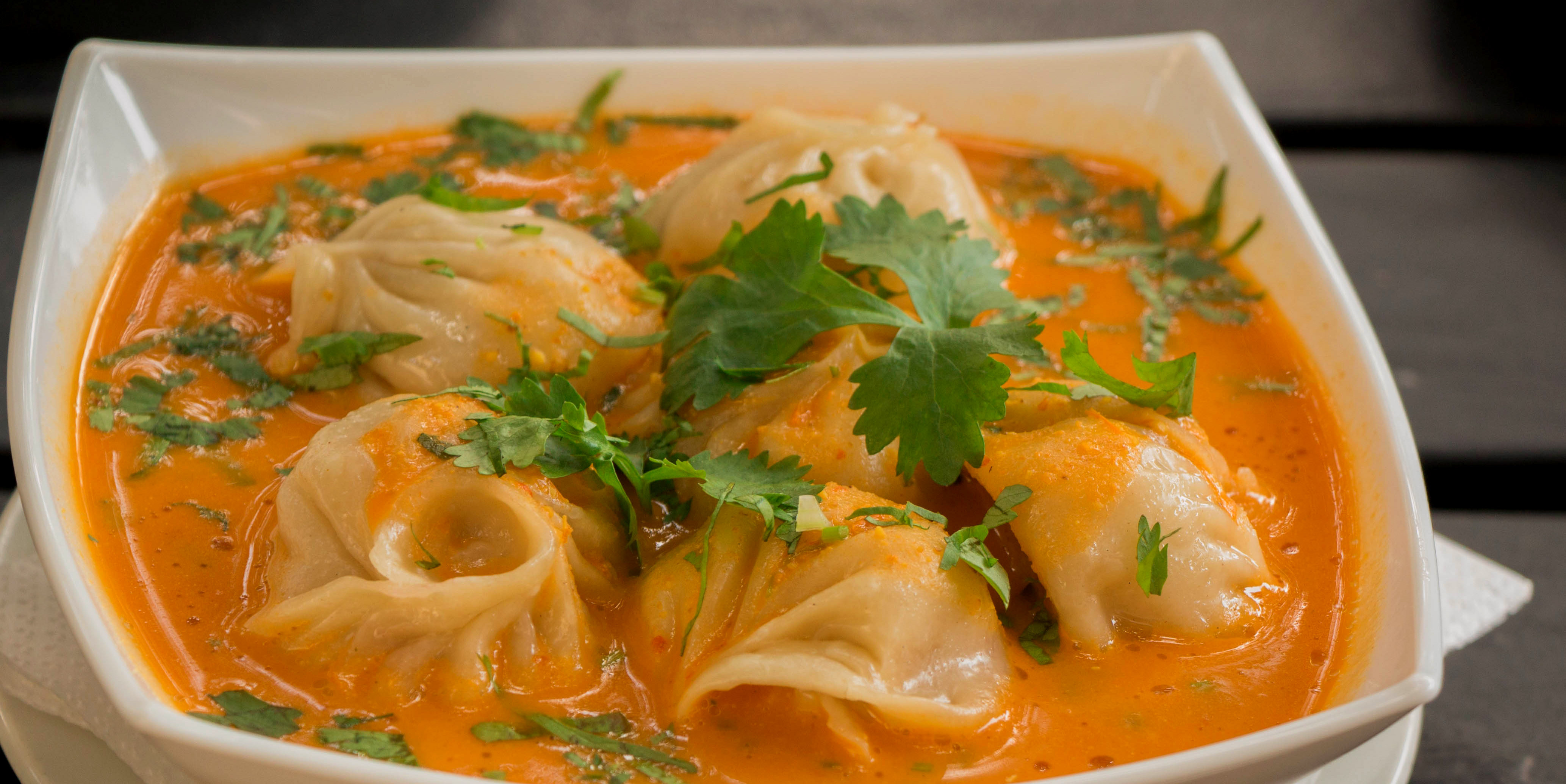
Origin and Cultural Significance
-
Tibetan Roots: Momos originally came from Tibet and were brought to Nepal by the Newar traders of the Kathmandu Valley, who historically had strong trade ties with Tibet.
-
Cultural Integration: Over time, momos have been adapted to suit local Nepalese tastes, incorporating regional flavours and ingredients.
Ingredients and Preparation
-
Dough: The outer shell of a momo is made from a simple dough of white flour and water.
-
Fillings: Traditionally, the fillings were meat-based, with minced yak or goat meat. However, in Nepal, chicken, buffalo, pork, and vegetable fillings have become popular. These fillings are often mixed with onions, garlic, ginger, and various spices.
-
Cooking Method: The filled dumplings are then steamed, although they can also be fried or baked.
Varieties and Accompaniments
-
Types: There are many varieties of momos, including Kothey (half fried and half steamed), Jhol (served with a spicy soup), and C-Momo (coated with a spicy sauce).
-
Accompaniments: Momos are typically served with a dipping sauce called achar, made from tomatoes, cilantro, and a mix of spices, which can range from mildly spicy to very hot.
Social Aspect
-
Ubiquitous Snack: Momos are a popular street food in Nepal, enjoyed by people of all backgrounds. They are also a common feature in restaurants and household gatherings.
-
Social Food: Making momos is often a communal activity where family members gather to prepare the dumplings together, making it a social and familial bonding experience.
Nutritional Aspect
- Balanced Meal: When served with a side of soup or salad, momos can provide a balanced mix of carbohydrates, protein, and vegetables.
Global Popularity
- International Recognition: With the Nepalese diaspora, momos have gained popularity in many countries around the world, becoming a representative dish of Nepalese cuisine globally.
Momos are not just a dish; they are a cultural phenomenon in Nepal, representing a fusion of traditions, communal bonding, and the joy of sharing a delicious and satisfying meal. They embody the essence of Nepalese hospitality and culinary ingenuity, making them a must-try for anyone exploring Nepalese cuisine.
Dhido
Dhido is a traditional and cherished food in Nepal, notable for its simplicity, nutritional value, and cultural significance. It's a staple dish, especially in rural areas and in the diets of many ethnic groups within the country. Dhido represents a crucial aspect of Nepal's culinary tradition, offering a glimpse into the country's agricultural practices and dietary preferences.
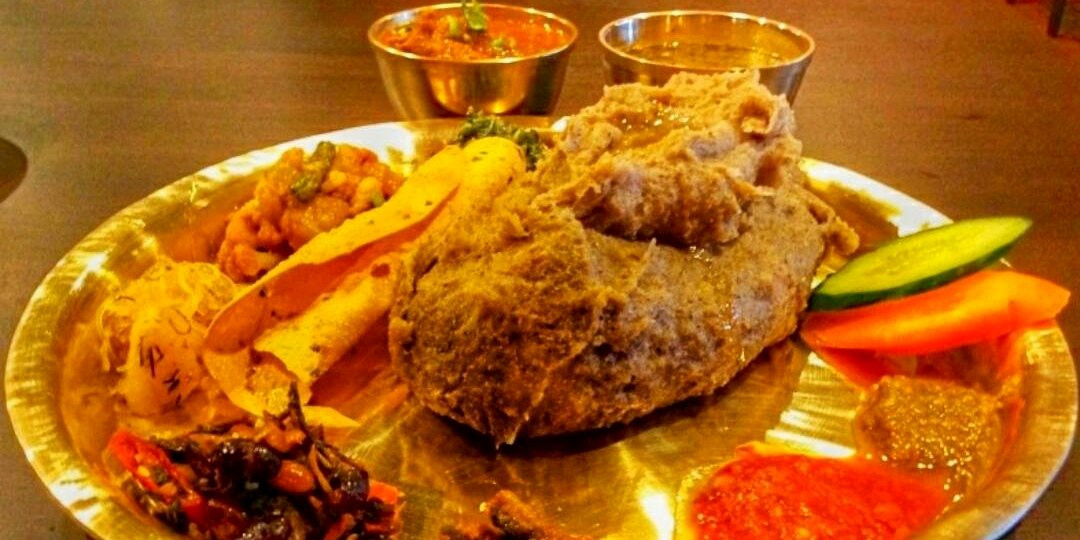
What is Dhido?
-
Basic Composition: Dhido is a thick porridge-like dish made by continuously stirring hot water with flour from various grains like millet, corn (maize), or buckwheat. In some regions, wheat flour is also used.
-
Cooking Technique: The key to making good Dhido lies in its cooking technique, which involves constant stirring to avoid lumps and achieve the right consistency.
Nutritional Value
-
Rich in Nutrients: Dhido is high in dietary fibres and provides a good source of carbohydrates and essential minerals. Being gluten-free (when made with millet, corn, or buckwheat flour), it's also suitable for those with gluten intolerance.
-
Health Benefits: As a low-fat, high-energy food, Dhido is particularly well-suited to the needs of people involved in physically demanding activities, which is common in many rural parts of Nepal.
Cultural and Social Significance
-
Cultural Staple: Dhido holds a special place in Nepalese culture, particularly among the rural population and various ethnic communities. It's often considered more satisfying and nutritious than rice or bread.
-
Symbol of Simplicity: The dish is a symbol of a simple, sustainable lifestyle, deeply connected to the land and traditional farming practices.
Accompaniments
-
Served With: Dhido is typically eaten with lentil soup (dal), vegetable curries, pickles, and sometimes meat or fish. The accompaniments vary depending on the regional and seasonal availability of ingredients.
-
Eating Method: Traditionally, Dhido is eaten with the hands. A small portion is rolled into a ball, dipped into the accompaniments, and then eaten.
Regional Variations
- Diverse Preparations: While the basic method of preparing Dhido is similar across Nepal, there are regional variations in terms of the type of grain used, consistency, and the side dishes it is served with.
Modern Relevance
-
Enduring Popularity: Despite the increasing availability of rice and bread, dhido continues to be a preferred meal in many Nepalese households, especially in rural areas.
-
Health and Sustainability: In recent times, there's been a growing appreciation for Dhido in urban areas as well, particularly among health-conscious individuals and those advocating for sustainable living.
Dhido is more than just a meal; it's a part of Nepal's heritage. It encapsulates the essence of traditional Nepalese cuisine: nutritious, hearty, and deeply rooted in the country's agricultural practices and cultural ethos.
Thukpa
Thukpa is a traditional noodle soup that holds a special place in Nepalese cuisine and is particularly popular in the mountainous regions of the country. It is a dish that beautifully encapsulates the cultural and culinary influences of neighbouring Tibet, where it originated, and has been heartily embraced and adapted in Nepal.
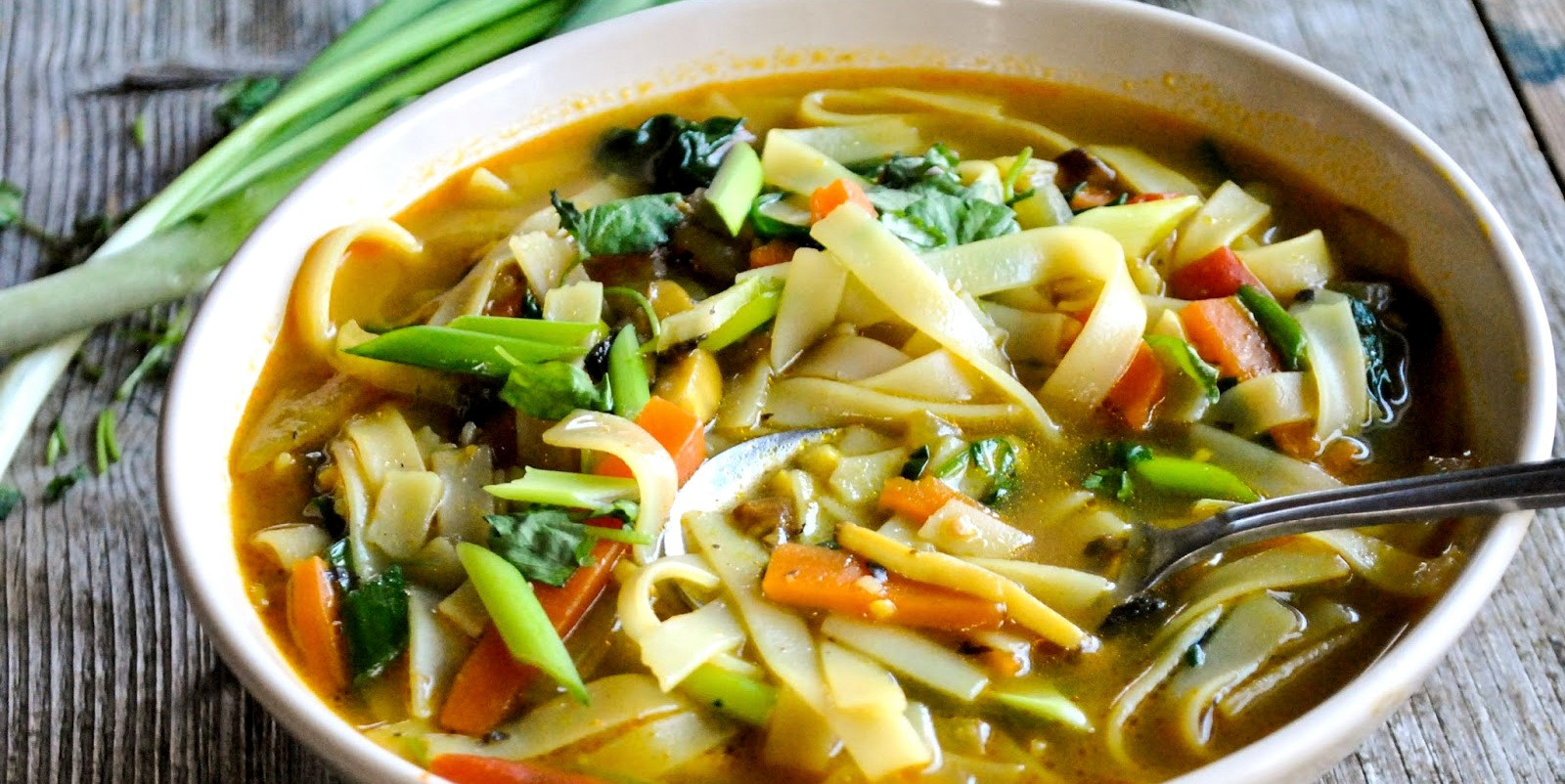
Origins and Cultural Significance
-
Tibetan Roots: Thukpa originally came from Tibet and was introduced to Nepal by Tibetan immigrants and traders.
-
Cultural Integration: In Nepal, Thukpa has been adapted to suit local tastes, becoming a staple in areas with Tibetan and Himalayan communities.
Ingredients and Preparation
-
Noodles: Thukpa is characterised by its use of hand-pulled, flat wheat noodles, which are hearty and filling.
-
Broth: The soup is typically a clear broth, seasoned with local spices and herbs. The flavour profile can range from mild to very spicy.
-
Meat and Vegetables: Commonly, the soup includes pieces of meat (such as chicken, mutton, or yak in the mountain regions) and a variety of vegetables like carrots, spinach, and onions.
Varieties
-
Regional Variations: There are several regional variations of Thukpa in Nepal, each with its own unique twist. Some versions are more heavily spiced than others, and the choice of vegetables and meats can vary.
-
Vegetarian Options: While traditionally made with meat, vegetarian versions of Thukpa are also popular, especially in areas with Buddhist influences.
Nutritional Value
- Balanced Meal: Thukpa is considered a balanced meal, with carbohydrates from the noodles, protein from the meat, and vitamins and minerals from the vegetables. It's particularly favoured in colder weather for its warming and nourishing properties.
Social and Comfort Food
-
Popular Street Food: In urban areas, Thukpa is a popular street food, loved for its comforting warmth and hearty nature.
-
Homely Dish: In homes, Thukpa is often enjoyed as a comforting meal, bringing warmth and satisfaction, especially during the cold months.
Modern Adaptations
-
Global Appeal: With the Nepalese diaspora, Thukpa has gained popularity in many countries, appreciated for its rich flavors and comforting nature.
-
Fusion Variations: In contemporary Nepalese cuisine, there are fusion variations of Thukpa, combining elements from other culinary traditions.
Thukpa is a dish that not only offers a taste of Nepalese hospitality but also tells a story of cultural exchange and adaptation. It's a testament to the country's ability to embrace and assimilate influences while maintaining its unique culinary identity. Whether enjoyed in the bustling streets of Kathmandu or the serene mountains, Thukpa remains a beloved symbol of Nepal's rich gastronomic heritage.
Nepalese street food and snacks
Nepalese street food and snacks offer a vibrant and delicious insight into the country's rich culinary culture. These foods are not only tasty but also reflect the everyday life and diversity of Nepal. Here are some popular Nepalese street foods and snacks:
Chatamari
Chatamari is a beloved and iconic dish in the Newari cuisine of Nepal, often hailed as the 'Nepali Pizza'. This traditional delicacy from the Kathmandu Valley is celebrated for its unique flavour and versatility, making it a staple in both festive and everyday dining.
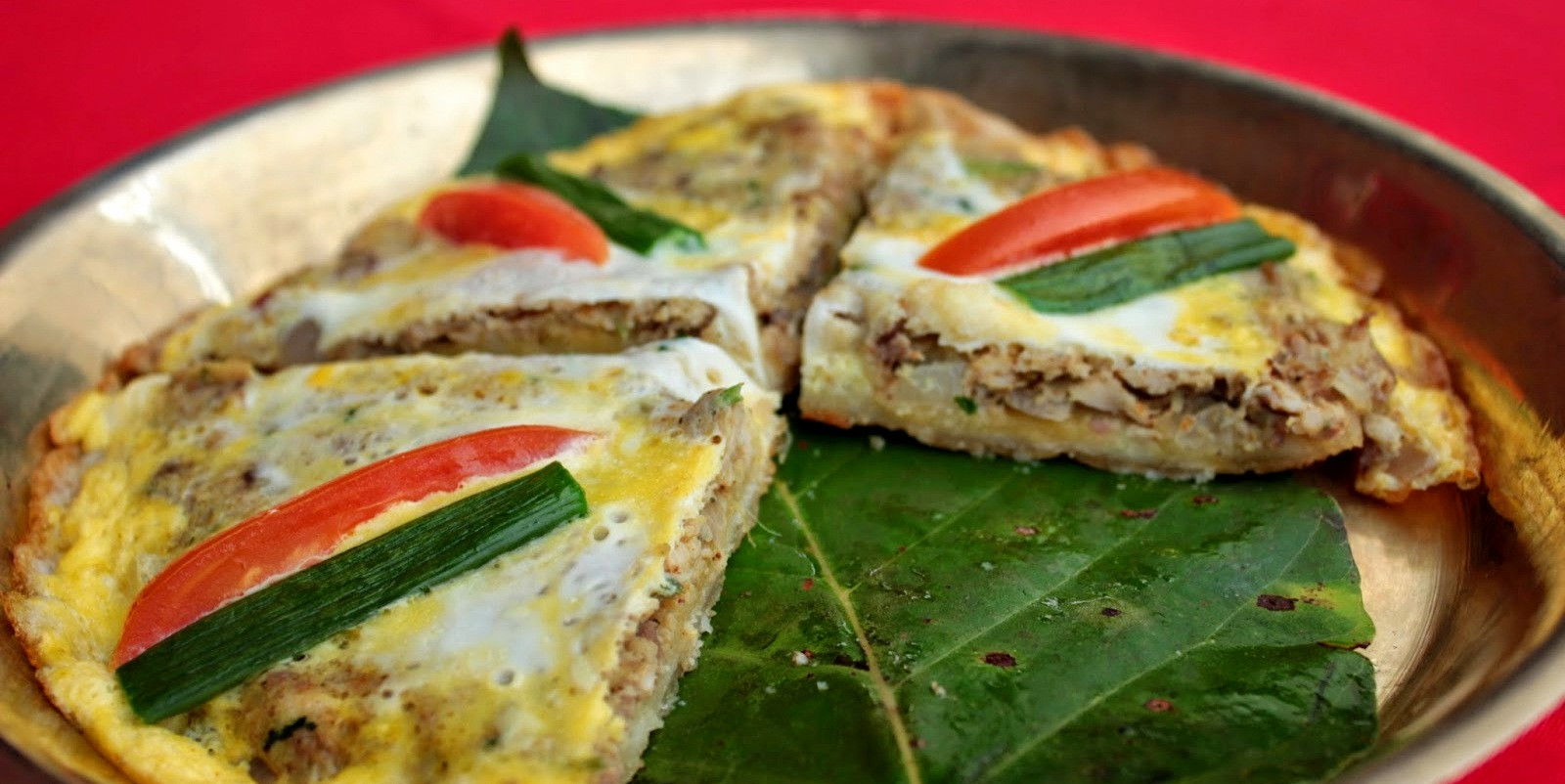
Origin and Cultural Significance
-
Newari Roots: Originating from the Newar community of the Kathmandu Valley, Chatamari is deeply rooted in Newari culture. It holds a significant place in their festivals, rituals, and celebrations.
-
Cultural Integration: Chatamari has gained widespread popularity across Nepal, transcending its ethnic origins and becoming a cherished dish among various Nepalese communities.
Ingredients and Preparation
-
Base: The base of Chatamari is a thin crepe made from rice flour. The batter, consisting of rice flour and water, is spread thinly over a heated pan to create a crisp, pancake-like foundation.
-
Toppings: Traditionally, toppings include minced meat (usually chicken, buffalo, or pork), chopped onions, green chilies, spices, and sometimes eggs. In vegetarian versions, finely chopped vegetables or paneer (cottage cheese) can be used.
Cooking Technique
- Pan Cooking: Similar to making pancakes, chatamari is cooked on a flat pan or griddle. The batter is poured and spread thinly, followed by the addition of toppings. It's typically cooked on one side until the base is crisp and the toppings are well-cooked.
Serving and Variations
-
Serving: It can be served as an appetizer, snack, or main course and is often accompanied by various chutneys or achar.
-
Variations: There are numerous modern variations of Chatamari, including adaptations with cheese, different types of meats, and an assortment of vegetables, catering to diverse palates.
Nutritional Aspect
- Balanced Meal: Chatamari offers a good balance of carbohydrates, protein, and vegetables, making it a wholesome and satisfying meal option.
Role in Nepalese Cuisine
-
Festive and everyday food: While prominent on festive occasions and Newari feasts, chatamari has also become a common street food, loved for its quick preparation and delicious taste.
-
Popularity in Urban Areas: In cities like Kathmandu, Chatamari is widely available in restaurants and street food stalls, reflecting its popularity and integration into urban Nepalese cuisine.
Modern Popularity
- Global Reach: With the Nepalese diaspora, Chatamari has gained international recognition, introducing the flavors of Newari cuisine to a global audience.
Chatamari is more than just a dish; it's a symbol of Newar heritage, a testament to the rich cultural tapestry of Nepal, and a beloved culinary tradition that continues to evolve and delight palates both within Nepal and around the world.
Sel Roti
Sel Roti is a distinctive and beloved traditional delicacy of Nepal, particularly cherished during festivals and celebrations. It holds a special place in the heart of Nepalese culinary culture, not only for its unique taste and texture but also for its cultural significance.
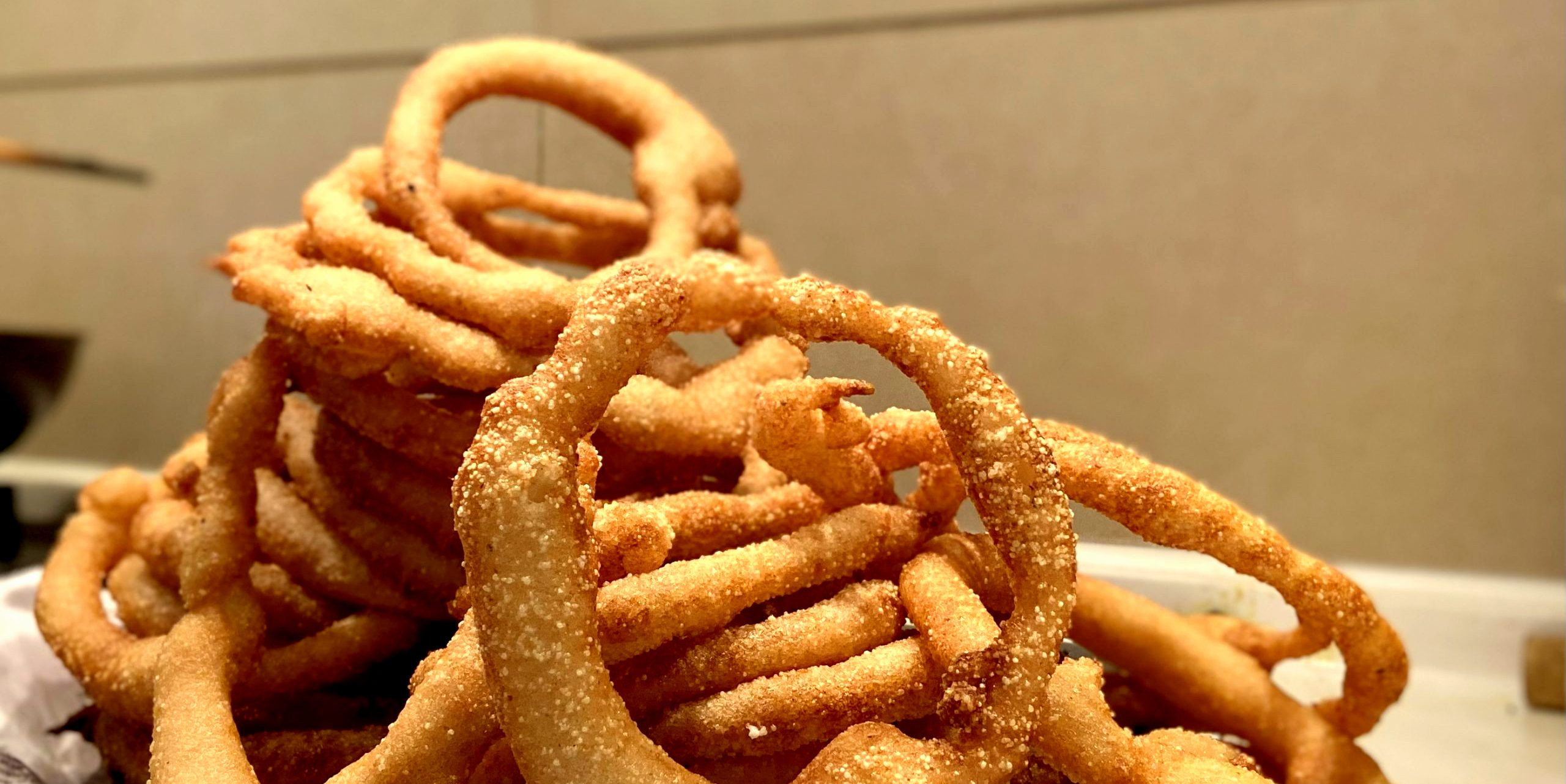
Origin and Cultural Significance
-
Cultural Staple: Predominantly associated with the Nepalese festivals of Dashain and Tihar, Sel Roti is an integral part of Nepalese festivities and is also enjoyed during weddings and other celebrations.
-
Symbolic Dish: It's often seen as a symbol of goodwill and is commonly made in Nepalese homes during special occasions, symbolizing happiness, prosperity, and hospitality.
Ingredients and Preparation
-
Basic Ingredients: Sel Roti is made from rice flour, which is soaked overnight, ground into a fine paste, and then mixed with sugar, ghee (clarified butter), cardamom, and sometimes banana for added flavour.
-
Unique Cooking Method: The batter is deep-fried in oil or ghee, but what makes Sel Roti unique is its ring shape, achieved by pouring the batter into hot oil in a circular motion using one's hands or a utensil.
Texture and Taste
- Crispy and Sweet: The texture of Sel Roti is crispy on the outside and soft on the inside, with a sweet flavour that comes from the sugar and the aromatic hint of cardamom.
Serving and Consumption
-
Accompaniments: It can be eaten on its own or served with yoghurt, vegetable curries, or meat dishes. During festivities, it is often accompanied by other traditional foods.
-
Breakfast and Snack: While predominantly a festive treat, Sel Roti is also enjoyed as a breakfast item or a snack in Nepal.
Nutritional Aspect
- Energy-Rich: Being a deep-fried sweet bread, it is energy-dense, making it a filling snack or breakfast item.
Cultural Exchange and Adaptation
-
Adaptation Across Cultures: While it is a traditional Nepali dish, Sel Roti has found its way into the hearts and kitchens of various communities in Nepal, each adding their own unique twist to it.
-
Global Reach: With the Nepalese diaspora, Sel Roti has also gained popularity in different parts of the world, introducing a taste of Nepalese tradition to a global audience.
Sel Roti is not just a food item; it's a part of Nepal's cultural identity, a culinary art form passed down through generations. It epitomizes the spirit of Nepalese festivities and continues to be a beloved treat, relished by Nepalese people of all ages, both in Nepal and around the world.
Jeri (or Jilebi)
Jeri, also known as Jilebi in some regions, is a popular sweet treat in Nepal, known for its bright orange colour and coiled, pretzel-like shape. This deep-fried, sugary delight holds a special place in Nepalese cuisine and is often associated with celebrations and festive occasions.
.jpg)
Origin and Cultural Significance
-
South Asian Roots: While Jeri is a staple in Nepalese festivities, its origins can be traced back to the Indian subcontinent, where it is known as Jalebi.
-
Festive Treat: In Nepal, Jeri is particularly popular during festivals and special occasions, symbolising joy and celebration.
Ingredients and Preparation
-
Basic Composition: The batter for Jeri is made from all-purpose flour, typically fermented with yoghurt or yeast, and sometimes with a touch of saffron for colour.
-
Deep-Frying and Syrup: The batter is squeezed into hot oil in a coil shape and deep-fried until crisp. The fried coils are then soaked in a sugar syrup, often flavoured with cardamom or rose water, which gives Jeri its characteristic sweetness and gloss.
Texture and Taste
- Crispy and Sweet: Jeri has a crispy texture on the outside and a syrupy, somewhat chewy inside. The sweetness is pronounced, making it a favorite among those with a sweet tooth.
Serving and Consumption
- Stand-alone Sweet: Jeri is typically enjoyed on its own as a dessert or a snack. It's a common sight in sweet shops and street food stalls across Nepal.
- Festive and Celebration Food: Often served during weddings, religious ceremonies, and major festivals like Dashain and Tihar, Jeri is a symbol of happiness and good fortune.
Nutritional Aspect
- High in Calories: As a deep-fried and syrup-soaked sweet, Jeri is high in calories and is enjoyed as an indulgent treat.
Cultural Exchange
-
Adaptation Across Regions: While it shares its roots with the Indian Jalebi, the Nepalese Jeri has its own unique regional variations in terms of flavour and texture.
-
Global Recognition: With the spread of Nepalese and South Asian diaspora, Jeri has gained popularity in various parts of the world, introducing a taste of Nepalese sweetness to different cultures.
Jeri's enduring popularity in Nepal is a testament to its delightful taste and its role in the celebration of life's special moments. As a staple in Nepalese festive cuisine, Jeri continues to be a cherished sweet, enjoyed by people of all ages and backgrounds.
Laphing
Laphing is a unique and increasingly popular dish in Nepal, especially in the Kathmandu Valley, known for its distinct flavors and textures. Originating from Tibetan cuisine, Laphing has seamlessly integrated into Nepalese street food culture, offering a taste of Tibetan culinary tradition with a Nepalese twist.
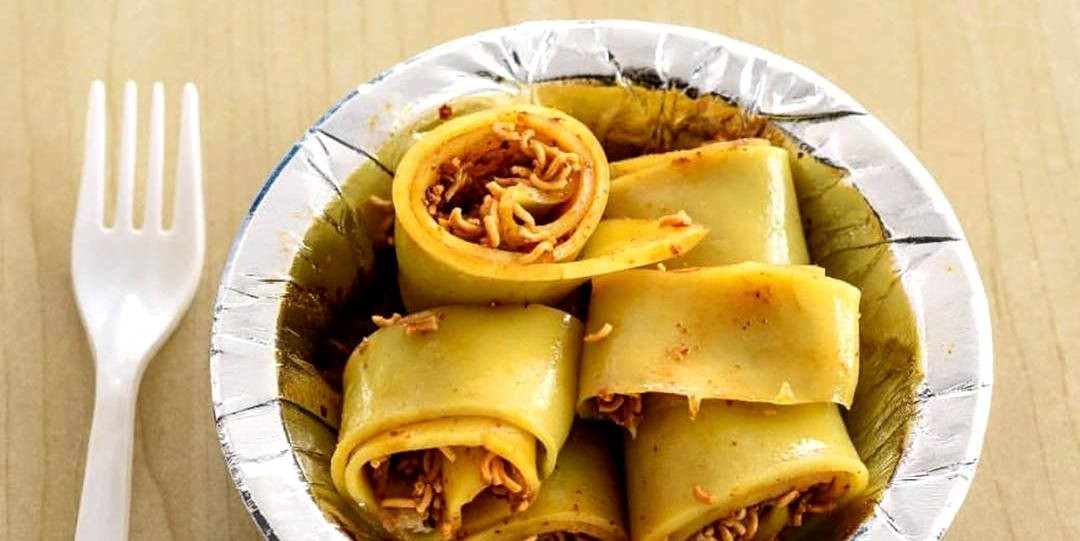
Origin and Cultural Background
-
Tibetan Roots: Laphing originated in Tibetan cuisine and was brought to Nepal by Tibetan communities and refugees.
-
Cultural Integration: It has become a staple in areas with significant Tibetan populations and is increasingly embraced across various regions of Nepal.
Ingredients and Preparation
-
Main Component: Laphing is made from mung bean starch or wheat flour, resulting in a jelly-like, translucent noodle or sheet.
-
Spicy and Tangy Flavour: The noodles or sheets are seasoned with a mixture of soy sauce, vinegar, garlic, chilli oil, and Sichuan pepper, giving it a distinct spicy and tangy flavour profile.
Serving Styles
-
Cold Dish: Laphing is typically served cold, making it a refreshing snack or appetiser, especially during the warmer months.
-
Variations: There are different variations of laphing, some including more watery and soup-like versions, while others are drier with a focus on the chewy texture of the noodles.
Popularity and Availability
-
Street Food: Laphing has become a popular street food in Nepal, particularly in Kathmandu, where vendors and small eateries specialize in this dish.
-
Growing Trend: Its popularity is growing among the younger generation and food enthusiasts who are keen on exploring different flavours and textures.
Nutritional Aspect
-
Low in Calories: Being primarily made from mung bean starch or wheat flour, laphing is relatively low in calories.
-
Gluten-Free Option: When made from mung bean starch, Laphing is a gluten-free option that caters to those with dietary restrictions.
Cultural Exchange
-
Fusion and Adaptation: In Nepal, laphing has been adapted to local tastes, often featuring additional spices and variations that cater to Nepalese palates.
-
Symbol of Cultural Harmony: The dish represents the cultural harmony and exchange between Nepalese and Tibetan communities.
Laphing stands out as a culinary delight in Nepalese cuisine, symbolising the fusion of cultures and flavours. Its unique texture and spicy, tangy taste make it a must-try for those exploring the diverse street food scene of Nepal. As it gains popularity, Laphing not only offers a taste of Tibet in the heart of Nepal but also showcases the evolving and adaptive nature of Nepalese cuisine.
Nepalese Beverage
Nepalese beverages, both alcoholic and non-alcoholic, are an integral part of the country's culinary heritage, reflecting its cultural diversity and agricultural traditions. Here are some of the most notable drinks from Nepal:
Chiya (Tea)
Chiya, the Nepali term for tea, is an integral part of Nepal's culinary and cultural landscape. It's not just a beverage; it's a ritual, a symbol of hospitality, and a daily tradition deeply ingrained in the Nepalese way of life.

Cultural Significance
-
Daily Ritual: In Nepal, chiya is more than just a morning drink; it's consumed throughout the day. It's a focal point for social interaction, relaxation, and hospitality.
-
Symbol of Hospitality: Offering chiya to guests is a common practice in Nepali culture, symbolising warmth and welcome.
Types and Preparation
-
Milk Tea: The most common form of chiya in Nepal is milk tea, which is a mixture of black tea, milk, sugar, and spices.
-
Spices Used: Spices like cardamom, ginger, cloves, and cinnamon are often added, giving it a distinct aroma and flavour.
-
Black Tea: Apart from milk tea, black tea is also widely consumed, especially in hilly and mountainous regions.
Regional Variations
-
Flavours Across Regions: The preparation and flavour of chiya can vary across different regions in Nepal, reflecting local tastes and available ingredients.
-
Tibetan Influence: In the Himalayan regions, butter tea, influenced by Tibetan culture, is popular. This is made with tea, butter, and salt, offering energy and warmth in the cold climate.
Social and Health Aspect
-
Social Beverage: Drinking chiya is a social affair in Nepal, often accompanied by light snacks and conversation.
-
Health Benefits: The spices used in chiya are not only flavorful but also carry health benefits. For instance, ginger is known for its digestive properties and cardamom for its heart health benefits.
Global Popularity
-
Tea Gardens and Exports: Nepal is known for its tea gardens, especially in regions like Ilam, and exports a significant amount of tea, contributing to its global popularity.
-
Tourist Attraction: Tea tasting and visits to tea gardens have become attractions for tourists visiting Nepal, further popularising Chiya.
Chiya is a cornerstone of Nepalese culture, representing a blend of tradition, flavour, and social bonding. Whether it's a simple black tea in the mountains or a spiced milk tea in the cities, chiya remains a beloved and essential part of daily life in Nepal.
Lassi
Lassi is a traditional South Asian beverage that has become an integral part of Nepalese cuisine. It's a yogurt-based drink that is both refreshing and nourishing, often consumed to beat the heat and as a digestive aid. In Nepal, Lassi is not just a drink; it's a delightful concoction that blends the richness of yogurt with various flavors.
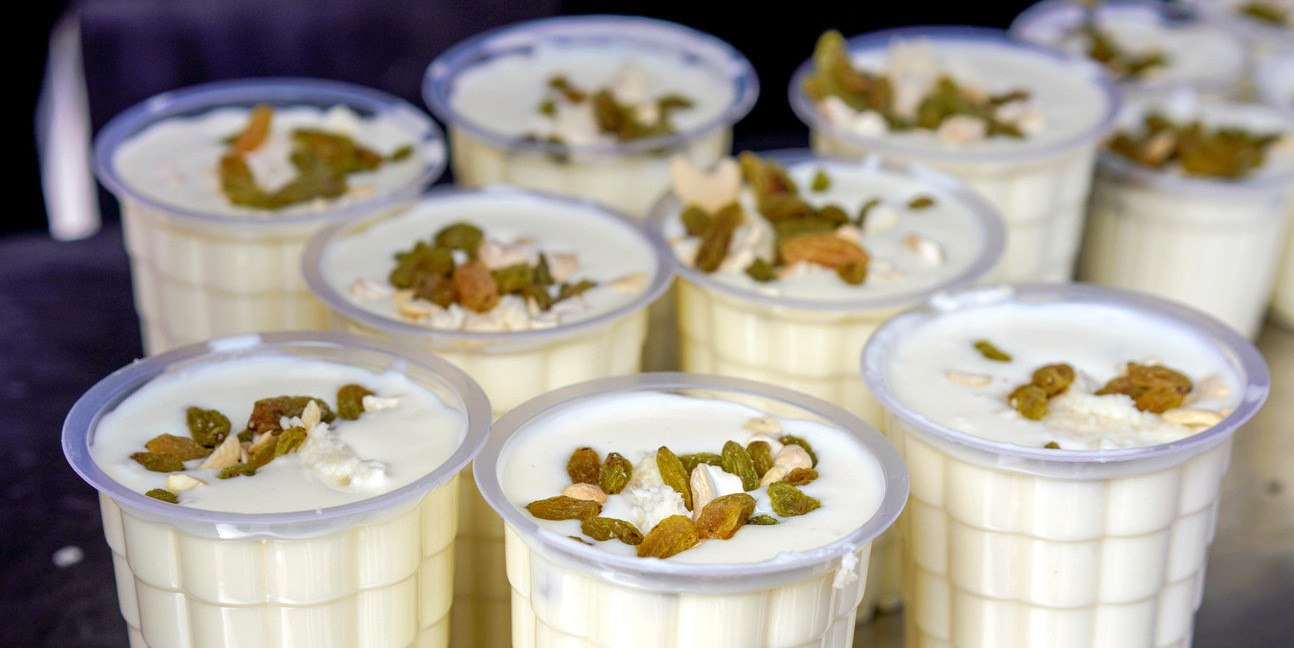
Origins and Cultural Significance
-
South Asian Staple: Originally from the Indian subcontinent, Lassi has been wholeheartedly embraced in Nepal, becoming a popular drink in both urban and rural areas.
-
Cultural Integration: In Nepal, lassi is often consumed during hot weather and is a common accompaniment to meals, particularly in the Terai region.
Varieties of Lassi
-
Sweet Lassi: The most common type, sweet Lassi, is made with yoghurt, water, and sugar and often flavored with cardamom or rosewater. It's creamy and has a mild sweetness.
-
Salty Lassi: A savory version, made with yogurt, water, salt, and sometimes spices like roasted cumin powder, which gives it a refreshing and unique taste.
-
Mango Lassi: A popular variant, especially during the mango season, combines yogurt with ripe mangoes, creating a rich, fruity flavor.
Preparation and Ingredients
-
Basic Recipe: The basic preparation involves blending yogurt with water to achieve a creamy consistency. Sweeteners or salt, along with various flavorings, are then added.
-
Flavor Variations: Beyond the traditional types, modern variations include the addition of fruits, berries, and even herbs for a more contemporary twist.
Nutritional Value
- Health Benefits: Lassi is rich in probiotics from yogurt, which are beneficial for gut health. It also provides hydration and can be a good source of calcium and vitamins, depending on the ingredients used.
Social and Cultural Aspect
-
Street Food Staple: In Nepal, Lassi is widely available at street food stalls and local eateries, often served in tall glasses or clay pots, making it a popular choice for locals and tourists alike.
-
Festive and Everyday Drink: While it's a common everyday drink, Lassi is also served during festivals and celebrations, adding to its cultural significance.
Global Popularity
- International Appeal: With the global spread of South Asian cuisine, Lassi has gained popularity worldwide, often featured in Nepalese and Indian restaurants across the globe.
Lassi in Nepal is a testament to the country’s ability to blend its culinary traditions with those of its neighbors, creating a beverage that is not only delicious but also steeped in cultural and nutritional value. Whether enjoyed as a sweet treat or a savory refreshment, Lassi remains a beloved drink in the Nepalese culinary landscape.
Butter Tea
Butter Tea, also known as Po Cha in Tibetan, is a unique and traditional beverage that has made its way into Nepalese culture, particularly in the Himalayan regions where Tibetan influence is strong. This distinctive tea, often surprising to the uninitiated due to its salty flavor, is a staple in the daily life of people living in the high altitudes of Nepal and Tibet.
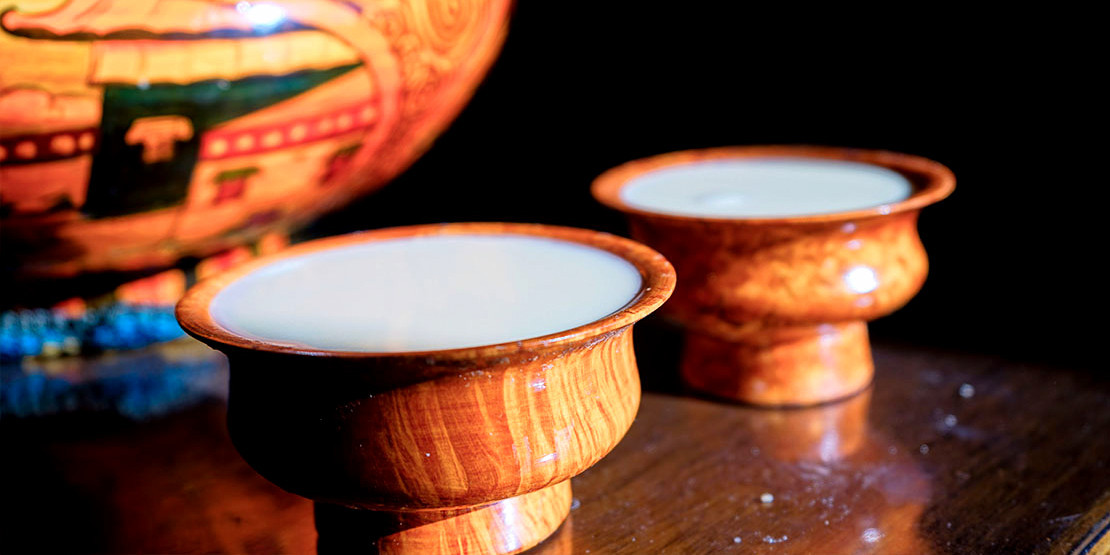
Origins and Cultural Significance
-
Tibetan Roots: Originally from Tibet, Butter Tea is an essential part of Tibetan and Himalayan cuisine. It has been adopted by Nepalese communities living in close proximity to Tibet or those with Tibetan heritage.
-
High-Altitude Necessity: In the harsh, cold climate of the Himalayas, Butter Tea serves as an important source of nourishment and warmth.
Ingredients and Preparation
-
Key Ingredients: The tea is made with strong black tea leaves, yak butter, and salt. The black tea used is often a specially brewed, strong variety.
-
Unique Preparation: The ingredients are churned together, traditionally in a special container called a churn, resulting in a creamy, frothy beverage. Modern methods might use blenders or other mixing techniques.
Taste and Texture
-
Savory and Rich: Butter Tea has a creamy consistency and a distinct savory, buttery taste, which can be quite different from typical sweet or herbal teas familiar to many people.
-
Acquired Taste: For those not accustomed to it, Butter Tea can be an acquired taste due to its unique flavor profile.
Nutritional Value
-
High Energy: The high calorie and fat content from yak butter make it an excellent source of energy, particularly beneficial in cold climates and at high altitudes where the body needs more calories to stay warm and function effectively.
-
Hydration and Nutrition: It also provides hydration and essential nutrients, which are vital in the sparse living conditions of the Himalayas.
Social and Cultural Aspect
-
Daily Ritual: Drinking Butter Tea is a daily ritual in many Himalayan households. It is consumed several times a day and is often offered to guests as a sign of hospitality.
-
Cultural Symbol: In Nepalese communities with Tibetan influences, Butter Tea is a symbol of connection to their Himalayan heritage and traditions.
Global Recognition
- Cultural Exposure: With the increasing interest in Himalayan culture and the spread of Tibetan and Nepalese diasporas, Butter Tea has gained international curiosity and recognition.
Butter Tea is much more than just a beverage; it's a vital part of life in the Himalayas, intertwined with the daily existence and cultural practices of the people in these regions. It exemplifies the adaptation of food habits to the challenging environments of high altitudes and serves as a warming, nourishing elixir for the inhabitants of these areas.
Tongba (Hot Millet Beer)
Tongba, often referred to as hot millet beer, is a traditional and unique alcoholic beverage widely consumed in the mountainous regions of Nepal, particularly among the Limbu people and other communities of Eastern Nepal. This drink is deeply ingrained in the culture and social life of these regions, symbolizing hospitality and communal bonding.
.jpg)
Cultural Significance
-
Ethnic Roots: Tongba is integral to the Limbu culture and is a prominent feature in their rituals, festivals, and social gatherings.
-
Symbol of Hospitality: Serving Tongba is considered a gesture of respect and friendship. It plays a crucial role in social cohesion and community celebrations.
Preparation and Ingredients
-
Fermented Millet: Tongba is made by fermenting millet seeds. The process involves cooking the millet, cooling it, and then mixing it with 'murcha' (a traditional fermenting agent).
-
Fermentation Process: After mixing, the mixture is stored in a warm place for fermentation, which can take several days or weeks, depending on the desired strength and flavor.
Serving and Consumption
-
Traditional Vessel: The fermented millet is served in a special wooden container called a 'Tongba' or a bamboo container.
-
Hot Water Addition: Hot water is poured over the fermented millet, and the drink is sipped through a bamboo straw called a 'pipsing'. The straw has small filter-like structures at the bottom to prevent the grains from being consumed.
-
Reusability: More hot water is added as the drink is consumed, and the millet can be reused several times until the flavor is exhausted.
Taste and Experience
-
Unique Flavor: Tongba has a mild, slightly sour, and earthy taste. The flavor can vary depending on the fermentation time and the millet used.
-
Warm and Soothing: Consumed warm, it is particularly comforting in cold weather, making it a popular choice in the Himalayan regions.
Social and Ritualistic Aspect
-
Community Bonding: Drinking Tongba is often a communal affair, fostering a sense of unity and camaraderie.
-
Ritualistic Use: It also holds ritual significance in various ceremonies and religious practices among the Limbu and other ethnic communities.
Nutritional and Health Aspects
- Nutritional Value: Being made from millet, tongba is a source of energy and nutrients, though it should be noted that it is an alcoholic beverage.
Modern Adaptations and Popularity
-
Tourist Attraction: Tongba has become a cultural attraction for tourists visiting the Himalayan regions of Nepal, offering a glimpse into the traditional lifestyle and customs of the local communities.
-
Cultural Preservation: Its continued popularity helps preserve the traditional brewing methods and cultural heritage associated with this unique beverage.
Tongba is much more than just an alcoholic drink; it's a symbol of cultural identity and heritage, especially for the Limbu community in Nepal. It embodies the spirit of the Himalayas, offering warmth, nourishment, and a unique experience that is deeply rooted in the traditions of the Nepalese highlands.
The evolution of Nepalese cuisine is a testament to the resilience, adaptability, and creativity of the Nepalese people. It is a cuisine that has continuously evolved, embracing change while holding onto the essence of its rich heritage. As we look to the future, Nepalese cuisine promises to continue its journey of innovation and fusion, bringing delight to both locals and food enthusiasts around the world.
FAQs on The Evolution of Nepalese cuisine
Q. What are the key influences on Nepalese cuisine?
A. Nepalese cuisine has been influenced by its neighbors, primarily India and Tibet, as well as its own diverse ethnic communities. Indian spices and cooking techniques, along with Tibetan dishes like momo and thukpa, have been integrated into Nepalese cooking.
Q. How have geographical factors shaped Nepalese cuisine?
A. Nepal's varied geography, from the high Himalayas to the fertile Terai plains, has led to diverse regional cuisines. The Himalayan regions rely on hearty, high-energy foods, while the lowlands have a richer variety of vegetables and spices.
Q. What role does ethnicity play in Nepalese cuisine?
A. Ethnic diversity is a cornerstone of Nepalese cuisine. Different ethnic groups, such as the Newars, Sherpas, and Tharus, have their unique culinary traditions, contributing to the overall mosaic of Nepalese food.
Q. How has Nepalese cuisine changed in recent times?
A. Modern Nepalese cuisine is experiencing a fusion of traditional methods with global influences. Urban areas, in particular, are seeing a rise in fusion dishes and the use of new ingredients, catering to international palates while still maintaining a distinctly Nepalese character.
Q. What are some traditional Nepalese dishes that have remained popular over time?
A. Traditional dishes like Dal Bhat (lentil soup served with rice), Momos (dumplings), and Sel Roti (sweet rice bread) continue to be staples in Nepalese cuisine.
Q. Is vegetarianism common in Nepalese cuisine?
A. Yes, vegetarianism is quite common and well-catered for in Nepalese cuisine, partly due to religious and cultural practices. Many traditional dishes are vegetarian or have vegetarian variants.
Q. How has globalization affected Nepalese cuisine?
A. Globalization has brought new ingredients and ideas to Nepalese cuisine. The growing tourism industry has also played a role, with chefs experimenting with international cuisines and ingredients.
Q. What is the significance of street food in Nepalese cuisine?
A. Street food is a vibrant and essential part of Nepalese cuisine, reflecting the country's dynamic and evolving food scene. It offers a glimpse into the modern palate of Nepal and is a testament to the living, evolving nature of its culinary traditions.
Q. Are there any sustainability trends in Nepalese cuisine?
A. There's a growing emphasis on sustainability and organic farming in Nepal, with a renewed interest in ancient grains and local, seasonal ingredients.
Q. How has Nepalese cuisine been received internationally?
A. Nepalese cuisine is gaining international recognition, with dishes like momo and dal bhat becoming popular in many countries, thanks to the growing Nepalese diaspora and interest in global culinary explorations.
For the Nepal tour, please click here.
If you are looking for different kinds of Nepal Tours or Trekking Packages, feel free to contact us.
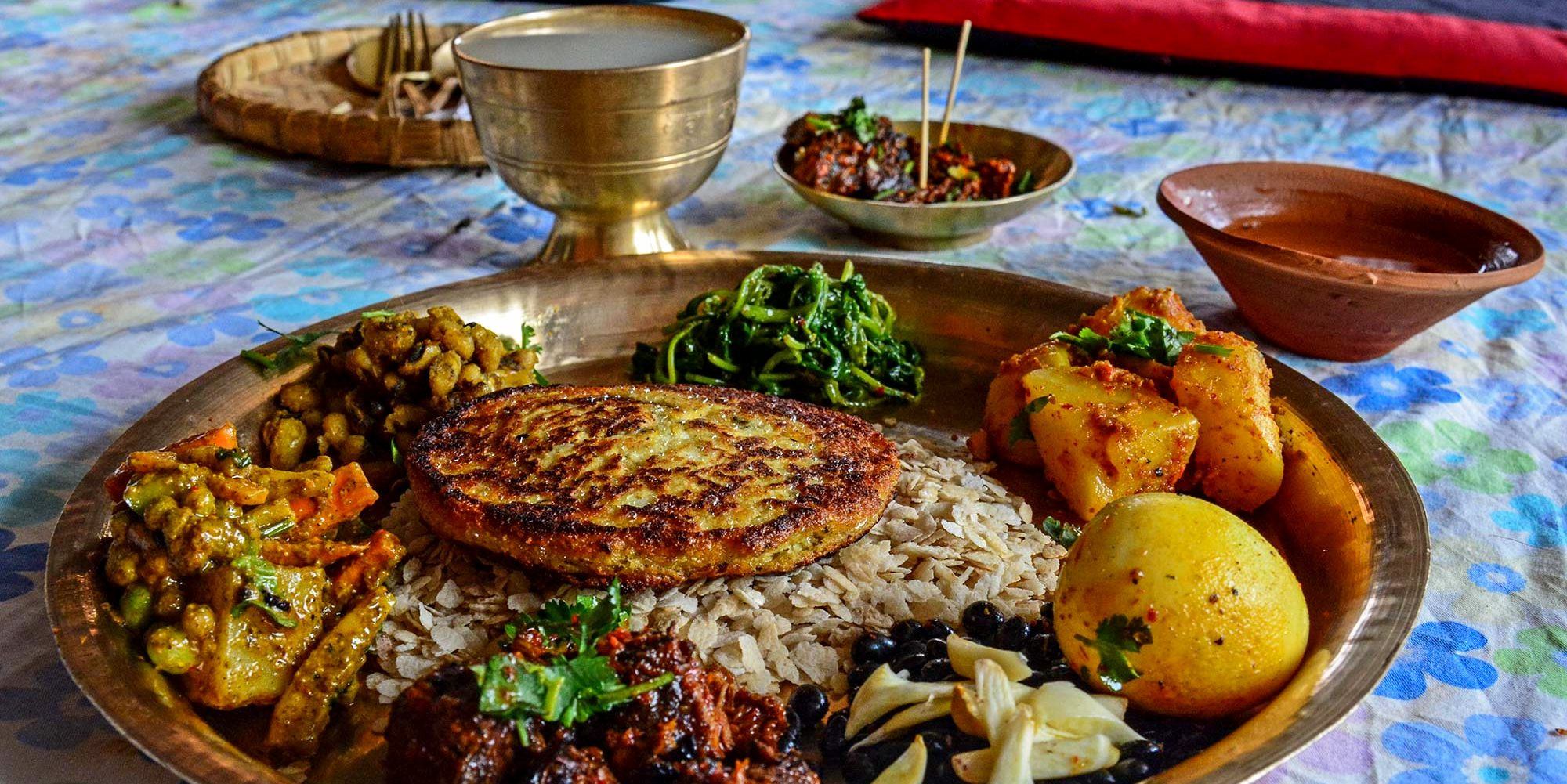







.jpg)




.jpg)